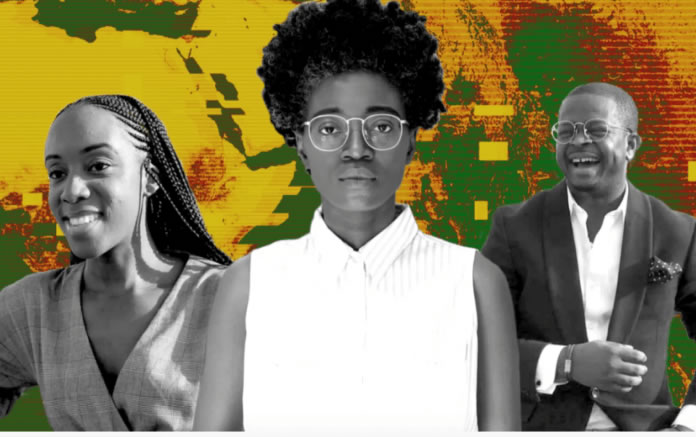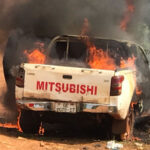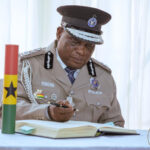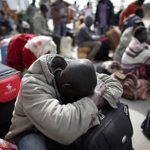The Rwandan Miracle: How A Nation Devastated By Genocide Has Risen To Become One Of The Fastest Growing Economies In Africa
- Home
- The Rwandan Miracle: How A Nation Devastated By Genocide Has Risen To Become One Of The Fastest Growing Economies In Africa
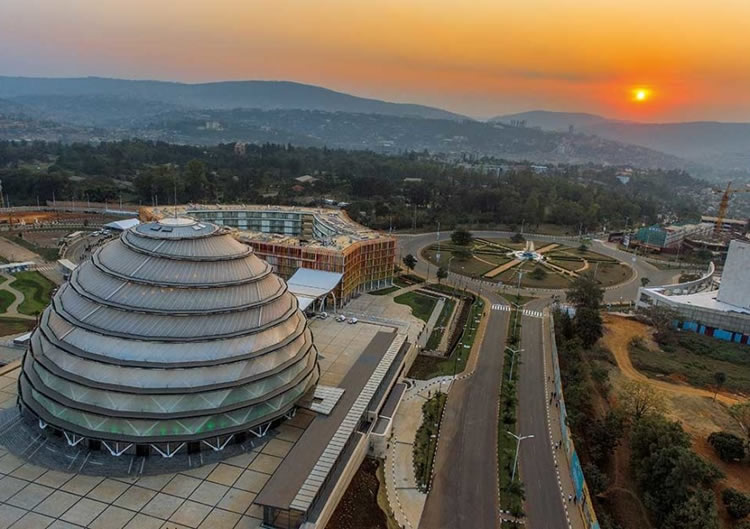
The Rwandan Miracle: How A Nation Devastated By Genocide Has Risen To Become One Of The Fastest Growing Economies In Africa
 The 100 day period from early-April to mid-July 1994 would go down as one of the darkest periods in human history. The Republic of Rwanda, a small landlocked nation situated in the heart of the African continent, became the scene of a mass-murder as tribal warfare between the Hutus and the Tutsis resulted in the deaths of an estimated 800,000 Rwandans.
The 100 day period from early-April to mid-July 1994 would go down as one of the darkest periods in human history. The Republic of Rwanda, a small landlocked nation situated in the heart of the African continent, became the scene of a mass-murder as tribal warfare between the Hutus and the Tutsis resulted in the deaths of an estimated 800,000 Rwandans.
Fast forward a couple of decades and the Rwandan story is one of remarkable economic development. The nation has been completely transformed from utter ruin into a shining example of African growth and stability; between 2010 and 2011, Rwandan GDP reached a record 8.2% and the poverty rate dropped by 57% with over a million Rwandans pulled out of poverty. Other indicators of human development, such as life expectancy, infant mortality, employment and literacy, have also significantly improved.
History
Virtually all commentators attribute Rwanda’s resurgence to the visionary leadership of one man, current president Paul Kagame. Known for his charisma and iron will, Kagame’s character is a product of his very rocky road to power.
Born an ethnic Tutsi in 1957, the young Paul Kagame was nearly killed along with his family in a Hutu attack. Fearing for their lives, the Kagame family moved to neighbouring Uganda where Paul would later join the Ugandan army. In 1990, the army sent Kagame to the US Army Command and General Staff College for further training. However, upon hearing rumours of a planned ethnic cleansing by Rwanda’s Hutu-dominated army, Kagame left his military training to take leadership of the Rwandan Patriotic Front (RPF), which at the time was an undisciplined and uninspiring Tutsi rebel group. With Kagame at the helm, the RPF evolved into a deadly military force which inspired by its charismatic leader, fought several battles against the Rwandan army and gained control of significant territory.
In April 1994, a plane carrying the then Rwandan president, Juvenal Habyarimana — an ethnic Hutu — was shot down by missiles. Although the perpetrators of this attack remain unclear, it was this incident that would set off the genocide as all fingers were pointed at the Tutsi rebel group. Branding their Tutsi countrymen as “cockroaches,” Hutu militants embarked on a vicious rampage of murder and rape, with the ultimate goal of a complete ethnic cleansing.
With the US and UN reluctant to intervene, it was up to Kagame’s RPF to stop the bloodshed. Marching through roads riddled with mass graves and mutilated Tutsis, the RPF went on the attack, successfully defeating the civilian and military groups responsible for the killing. They drove out hordes of Hutu assailants from the region, allowing exiled Tutsis to return from the swamps and bushes where they had taken refuge.
The RPF eventually succeeded in stopping the genocide, but this was only the first part of their job as there was still a risk of a second wave of violence; either by Tutsis motivated by revenge, or by Hutus wanting to finish off the surviving Tutsis. Consequently, Kagame’s first mandate was to promote national unity above all else, inviting both Hutus and Tutsis to play an active role in rebuilding their devastated nation — he did not blame the Hutus for the genocide but instead pointed the finger at the legacy of ethnic rivalry instigated by the country’s Belgian colonizers.
Rebuilding a nation
The six years following the war were particularly difficult as the Rwandan economy struggled to grow. However, unlike his African counterparts, Kagame was hostile to the idea of taking development loans from the World Bank. He envisioned a self-sustaining economy driven by domestic value creation and international trade. After years of research, study and travel, Kagame managed to develop the set of principles and policies that would fundamentally transform his nation’s economy. Rwanda’s success under Kagame can be narrowed down to 3 main factors:
1. Embracing free-market enterprise:
At time of the genocide, Rwanda had no private sector as the government controlled virtually every part of the economy. However, this was not unique to Rwanda as post-independence, most African countries had adopted Soviet-inspired socialist economic models. Pioneers like Julius Nyerere of Tanzania, Modibo Keita of Mali, Léopold Senghor of Senegal and Kwame Nkrumah of Ghana, were all proponents of “African socialism” — a romantic idea which held that the continent’s resources belonged to “the people” and therefore it was the role of government and not individuals to oversee the creation and distribution of wealth. To achieve this utopian vision, the African founding fathers instituted various government ministries to oversee almost every sector imaginable; education, healthcare, telecoms, technology, petroleum, labour, trade, housing, culture, information, transportation and even sports — there was a minister for everything and anything. As with most places, the practical result of this philosophy in Rwanda was the concentration of power in large government bureaucracies which naturally attracted ambitious and power-hungry politicians.
Under the tight grip of an inefficient, incompetent and corrupt public sector; poverty, illiteracy and poor health was the way of life for most Rwandans at the time of the 1994 genocide. Today under the Kagame administration however, the focus has been placed squarely on the private sector as the primary driver of the economy. The Rwandan government has greatly boosted its attractiveness for foreign direct investment by investing in its infrastructure; maintaining a stable currency; investing in education; and marketing itself to the world as a politically-stable, low-risk investment destination. In 2008, the country also changed its language of education from French to English, so as to better equip its labour force for doing business in the global market place.
Referred to as the country’s CEO, Kagame has sought to build ties with global brands such as Google, Walmart, Chevron and more recently, Arsenal Football Club. His efforts have reaped huge rewards as under his watch Rwanda has seen consistent year-on-year increases in foreign direct investment (FDI) — in the decade spanning 2007 to 2010 Rwandan FDI more than doubled, growing from an estimated 800 million dollars in 2007 to over 1.6 billion dollars in 2017. This has had a huge impact on youth unemployment as most of this investment has been poured into labour intensive sectors such as mining, agriculture, tourism and construction.
The spirit of enterprise has seeped into every level of Rwandan society. The country has a large informal sector mainly composed of market vendors dealing in locally sourced food products. The nation’s capital Kigali is now home to a growing community of successful young entrepreneurs produced and nurtured by its various tech hubs and business incubators. The government’s drive to promote Rwanda as a global tourist destination has allowed many Rwandans to take up employment in the hospitality sector, treating visitors to the country’s breath-taking scenery and wild life.
2. Cultural revolution
The Rwandan government has taken measures to stamp out the culture of corruption and tribalism which was a distinct feature of the pre-genocide era. Rolling out billboards with messages like: “Investment yes. Corruption no.” and “There is no space for corruption”, The Kagame administration is known for its strong anti-corruption stance. Taking accountability to the grass-roots, Kagame reintroduced the precolonial practice of imihigo, which in Rwandan tradition, was a process whereby community leaders would declare their objectives to their tribal chiefs and tribesmen, who in response would pledge to support them in achieving their goals. In its modern form, Imihigo is an annual event where local mayors provide a statement of goals for the coming year, along with a report showing their progress on the objectives of the previous year. As a result of this and several other anti-corruption initiatives, Rwanda now stands out from other African countries as a remarkably honest place to do business. In Transparency International’s 2017 corruption perception index, Rwanda was ranked in the top three least corrupt countries in Africa (alongside Botswana and Cape Verde), posting a higher score than China, Italy and even South Korea!
The government’s commitment to gender equality is more than just lip service — at 56%, Rwanda boasts of the highest rate of female parliamentary representation in world. Putting things into perspective, female representation in the British parliament stands at 32% while in the United states legislature it is a mere 19.5%.
Kagame has also sought to integrate his personal discipline into the wider culture; his belief in order and cleanliness is reflected in policies aimed at obliging Rwandans to keep the country neat and tidy- the streets of Kigali are now one of the cleanest in the continent. Kagame’s message of reconciliation and his draconian approach to dealing with tribalism has helped forge unity between Hutus and Tutsis. A Tutsi widow, when asked about why she chose to forgive the militants who brutally hacked her husband to death, simply replied, “The president has asked me to do it.”
3. Targeted social welfare programmes
Despite its embrace of private enterprise, the Rwandan government also recognises the role to be played by the public sector in promoting the economic well-being of its citizens. Hence the government has implemented a range of social welfare programs primarily aimed at the nation’s poor. For example, through the Girinka program, the government provides cows to poor families living in rural areas. As these Rwandans tend to be subsistence farmers, these free cows bring major improvements to their living standards; serving as a source of milk for children and also as fertilizer for their crops. This tailored approach to welfare and wealth redistribution serves as an example to other African government, who have very often been guilty of applying western solutions to African problems.
Beyond improving the day-to-day well-being of its people, the Rwandan government has also rolled out policies to help achieve its broader long-term ambitions. In 2000, Kagame’s launched his Vision 2020 development programme which aims to transform Rwanda into a knowledge-based middle income economy by the year 2020. To achieve this objective, the government has dedicated a quarter of its annual budget towards education, raised the compulsory schooling age from nine to twelve, and revised the schooling curriculum to ensure a stronger focus on fundamental linguistic and technical skills.
A flawed Hero?
Kagame’s achievements have won him global recognition and accolades. He was called a “visionary” by former British Prime minister, Tony Blair; while the ex-US president, Bill Clinton dubbed him one of “the greatest leaders of our time.” However, he is not without his detractors; Kagame is regularly accused of favouritism, human right violations and repression of dissenting voices. He was also accused of foul-play in his last two re-election successes; firstly, in 2010 when he won by 93% of the vote and more recently in 2017 when he won by 99%, following the enactment of a constitutional change which enabled him to run for an unprecedented third term.


Looking through western-tinted glasses, Rwanda’s apparent democratic deficit under Kagame will be of serious concern. However, one must question whether the Eurocentric obsession with democracy is of any benefit to developing African nations with a deep history of monarchical rule. On a continent where most governments still struggle to fulfil basic functions such as providing infrastructure, education and security, ideals such as freedom of speech and universal suffrage are surely nothing more than luxuries. Imperfect as he might be, Mr Kagame’s achievements in Rwanda place him head and shoulders above the vast majority of his contemporaries. There is clearly a lot of work still to do with Rwanda’s GDP per capita currently at a mere $2,100 compared to the world average of $17,300, however with consistency, persistence and encouragement, we can expect Rwanda to grow in leaps and bounds over the coming decades.
Source: New Africa Network
- Share
Classic Ghana
Classic Ghana brings you into a fun world of arts, entertainment, fashion, beauty, photography, culture and all things in between. Let’s explore these together!



